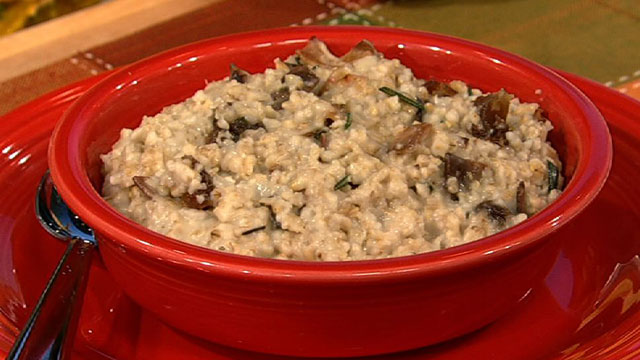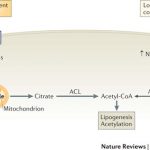History of the Gladiator Diet
Science has verified that Roman gladiator diet was primarily vegetarian. More interestingly it was apparently a starch based diet. Recent tests on bones has verified contemporary accounts of these “Barley Men”. They got the majority of their calories from whole-food complex carbohydrates. Their primary food was a barley and bean porridge. This staple would have had several advantages to the gladiator school:
- Cheap to produce
- Easy to make large batches
- Perfect energy profile for sprint-based athletics
- Enough protein to build strong muscles
In addition to whole grains and legumes, gladiators also regularly ate:
- Fresh and dried fruit
- Greens and vegetables
- Flax seeds
Experimental Gladiator Dietary Protocol
Each gladiator school had their own recipes and training secrets. In that spirit, we put forward the eating rules for our gladiator school.
- All grains are allowed, but must be eaten whole (no grain based flours)
- Grains, beans and root vegetables make up from two thirds to one half of daily food eaten, by volume
- Beans are allowed in all forms, including bean flour
- Greens and yellow vegetables make up one third to half of daily food eaten, by volume
- Three tablespoons of seeds are allowed per day (Flax, almonds, sesame, etc.)
- Dairy, meat, fish, foul, refined sugars and liquid oil is eliminated
http://gladiator.veganrecipeguy.com/gladiator-diet-nutrition/
The figure of gladiators recalls the ideas of strength, hard training, endurance, and deadly efficiency: a perfect fighting machine. Historically, a gladiator was a sort of sport hero, and gladiator’s medicine probably one of the first forms of organised sports medicine. Statues and paintings of the ancient roman period tell us of this astonishing world of fighters.
There are traces of famous gladiators all over the known world at Roman times, resembling our Mohammad Ali or Mike Tyson. Most of them grew up in fighting schools, the most famous in Capua, near Naples in Italy: Spartacus, the rebel gladiator who inflicted a severe defeat to Roman army, came from there. Gladiators had to endure long session of training to fight in the arena.
Considering the modern diets of strength athletes, we should expect that gladiators had a high protein diet. However, analysis of their bones has put forward the hypothesis that gladiators were vegetarian athletes: in his accounts of Rome, the ancient historian Plinius refers to gladiators as “hordearii” (barley-eaters) (Eichholz et al., 1938).
Plants contain higher levels of strontium than animal tissues. People who consume more plants and less meat will build up measurably higher levels of strontium in their bones. Levels of strontium in the gladiators’ bones were two times as high than the bones of contemporary Ephesians (Kanz and Grossschmidt, 2007).
Roman army troopers, the “legionnaires”, had daily expenditure of energy that can be estimated at around 5000 kcal for the legionnaire performing engineer work and at 6000 kcal for the legionnaire in war action. At present, only workmen and sportsmen reach such levels of energy expenditure (Fornaris and Aubert, 1998). Legionnaires were able to endure long war campaignes and endless “magnis itineribus” (forced marches) with incredible resistance to fatigue.
The legionnaire’s daily ration consisted of 78% carbohydrates, mainly from wheat or barley. This diet has the advantages to provide slowly absorbed carbohydrates, to be provide high energy, and to be easily digestible. It provided good intestinal ballast, and was able to restore the energy reserves of the organism (Fornaris and Aubert, 1998; Lemon et al., 1992). The best fighters in the ancient world were essentially vegetarian.
Protein requirements for strength-trained or training athletes are elevated above those of sedentary individuals (Lemon et al., 1992). However, the Institute of Medicine concluded that the evidence for increased requirements for physically active individuals was not compelling, and suggested that the recommended dietary allowance (RDA) of 0.8 g of protein per kilogram of body weight per day was appropriate for healthy adults undertaking resistance or endurance exercise (Washington, 2002). The question of whether vegetarianism is associated with beneficial or detrimental effects on athletic performance has also been considered (Nieman, 1988, 1999). Observational studies of vegetarian and non-vegetarian athletes (Hanne et al., 1986) have found no differences in performance or fitness associated with the amount of animal protein consumed. Short-term interventional studies in which subjects consumed vegetarian or non-vegetarian diets for test periods (ranging from 2 to 6 wk) also detected no difference in performance parameters based on the presence or absence of foods derived from animal tissues (Nieman, 1988). In line with these findings, previous reviews of the scientific literature have concluded that a well-planned and varied vegetarian diet can meet the needs of athletes, as it was for Roman gladiators or legionnaires.
http://www.jssm.org/vol7/n4/24/v7n4-24text.php






